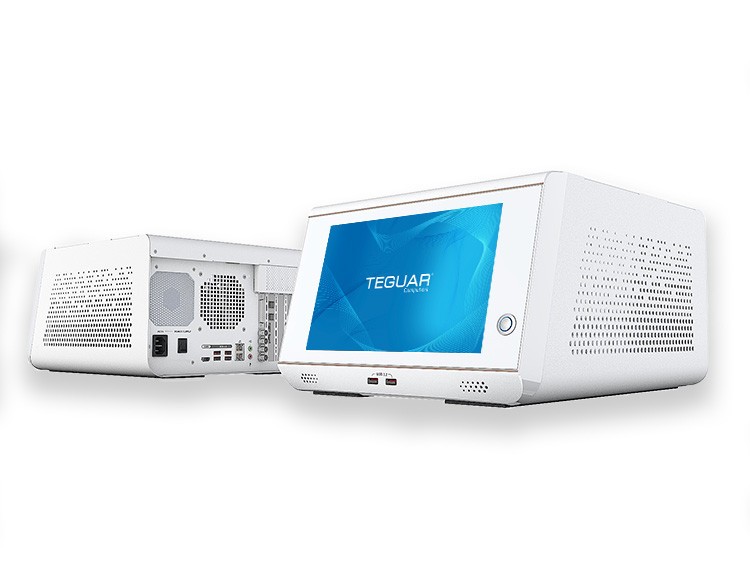What is a Heatsink?
A heatsink dissipates heat from a computer through a metal piece that sits on top or inside of the computer. The most heat usually comes from the CPU, but the GPU and other components can produce heat as well. Processors, especially high powered ones, can generate a lot of heat and if not cooled properly, the computer will overheat and can be damaged.
Heatsinks come in all different shapes and sizes.
Teguar’s TB-5545-MVS has a large aluminum heatsink on top. The motherboard is connected directly to the aluminum heat spreader with thermal transfer pads that move heat from the CPU and other electrical components, up into the aluminum fins.

The TM-4433-10 Medical Computer has a solid aluminum cover that makes direct contact with the CPU and dissipates heat. This aluminum cover sits between the motherboard and the back panel of the unit.

Teguar’s Waterproof Computer, the TSC-5010-15, has a similar looking finned heatsink to the Box PC, but this one sits inside the computer. The large heatsink plate connects to the computer’s processor and also uses copper heat pipes to help further dissipate heat.

The TM-5557-22 Medical All-in-One Computer uses both a large, mostly flat, aluminum plate and a set of fins that are connected via a copper pipe. Above the metal fins are ventilation holes, where heat escapes. Both of these dissipate heat away from electrical components.

Pictures courtesy of RuggedPCReview. See the Review of the TB-5545-MVS, Review of the TM-4433-10, Review of the TSC-5010-15, Review of the TM-5557-22.
Heatsink Vs Fans
The other way to dissipate heat is with a fan, but the fan is a common point of computer hardware failure, especially in tough environments. Fans can get clogged with dust or debris or even break when the computer is bumped, dropped, or exposed to mechanical vibration.
Heatsink is passive, meaning there are no moving parts. Fanned cooling is active, so there are moving parts and also ventilation holes. The other benefit of heatsink cooling is that it eliminates the need for ventilation holes and the computer can be completely sealed and waterproof.













